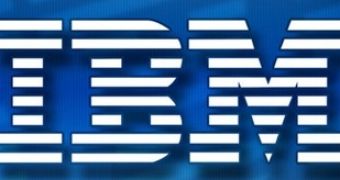IBM announced on Tuesday upgrades to its Unix servers by means of faster processors and new management software, designed especially for those that use the company's hardware for server consolidation as well as for virtualization. Big Blue came up with a 5GHz Power6 processor for its Power 570 top-selling midrange server. Previously, the CPU was available only for the high-end Power 595 system from IBM, but, given the good manufacturing yields for the 5GHz chip, the company is able to offer it in higher-volume systems, stated Scott Handy, IBM vice president of worldwide marketing and strategy.
The maximum density for the Power 570 has been leveraged too, and it can support up to eight 4.2GHz processors or up to four 5GHz CPUs in each server node. Also, customers can stack the nodes four high, meaning that up to 32 4.2GHz chips can be put inside the same box. According to Handy, the new enhancements boost performance for both square feet of server space and watts of power, transforming the 570 system into an ideal machine for virtualization and consolidation.
A new capability for IBM's PowerVM virtualization software is under testing as well. The software enables administrators to share virtual system memory between partitions and it works the same as the sharer of virtual processors. Big Blue plans to have the new Active Memory Sharing ready in the first half of 2009. Also, a new version of the Active Energy Manager is planned for general availability later this quarter. This piece of software can throttle down processor and fan speeds at moments when applications try to exceed a certain power threshold.
The company said that the software would come as a plug-in for IBM Systems Director. Also, while the monitoring power use tool is free, an IBM spokesman revealed that the throttling down consumption software would cost approximately $275 per server for the Power 570.
At this moment, IBM holds the first position on the Unix server market, and the company expects these improvements to keep it on top. Big Blue managed to regain the first place in the second quarter, when its share went up 5 percent compared to last year, said the research firm IDC. The firm also stated that Sun Microsystems Inc. went down 5.6 percent and is placed second, while Hewlett-Packard Co. gained one percent and accounts for the third place.
“Ever since their resurgence in the Unix market, IBM has been pushing performance up and prices down when they really don't have to,” said Dan Olds, an analyst at Gabriel Consulting Group Inc. in Beaverton, Ore. “Right now, they have the performance lead, and they are still pushing the speeds and feeds higher. They're keeping constant pressure on Sun and HP.”
The news on IBM also says that the company came up with a technology known as “hot node and repair”. The software will be available later in this quarter as well for the Power 570 and 595 systems, allowing administrators to shift a workload to a different server if a system shows it is about to fail, and move it back on the repaired server. Big Blue announced that the System i servers come with double the processor cores available until now. According to the company, it tries to offer common hardware for its servers running Linux, AIX or i5/OS. As an example, System i 550 used to run four cores, and now it comes with eight.
IBM also unveiled a new server for mid-sized companies, the Power 560 Express, which will make its entry on November 21st. The system is powered by a 3.6-GHz Power6 processor, features four-, eight- and 16-node configurations and comes with 384GB of memory. The new server will be offered either with Linux, AIX or I and has been designed for companies in need of a virtualized system to run multiple applications on. IBM did not give any price related information. Big Blue announced that its JS12 Express blade server is now available preinstalled with its i software and can be attached to the company's DS3200 storage gear to make a low-cost SAN.
According to Handy, around two-thirds of IBM's Unix servers that were shipped in the second quarter were delivered from its PowerVM virtualization software. The increase is a substantial one, as in the second quarter of the last year, only 21 percent of the servers included the software.

 14 DAY TRIAL //
14 DAY TRIAL //